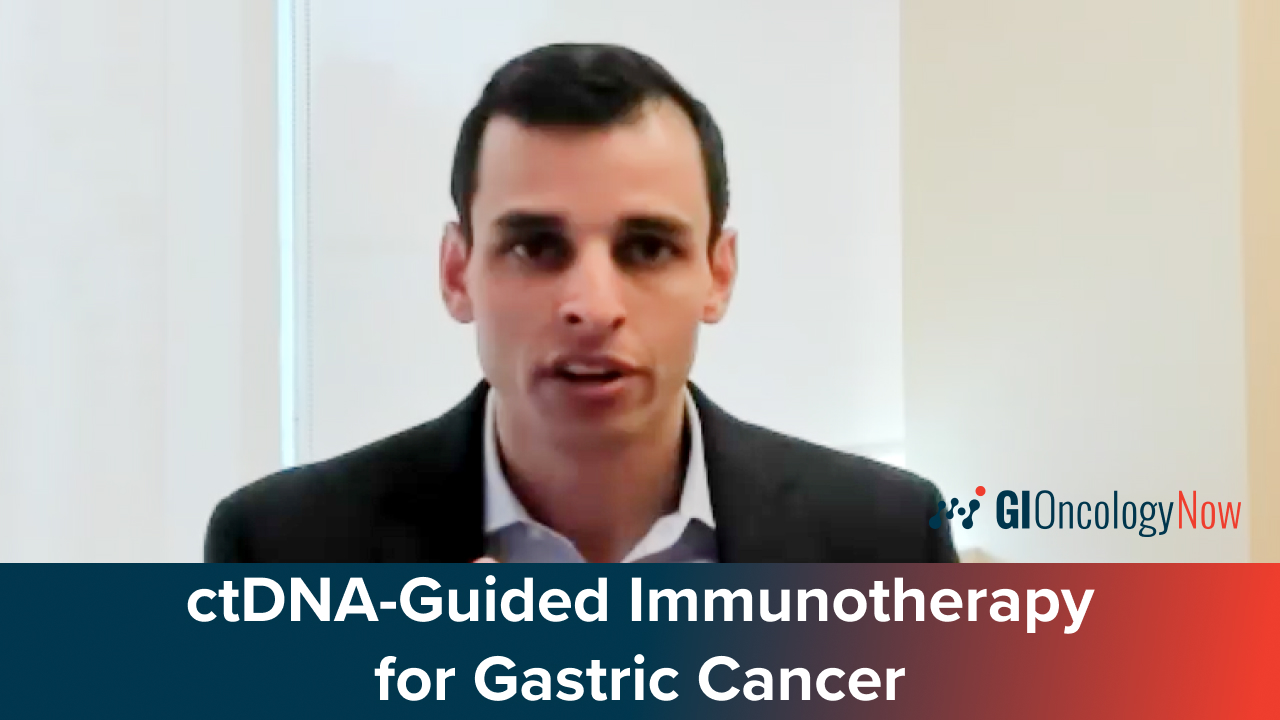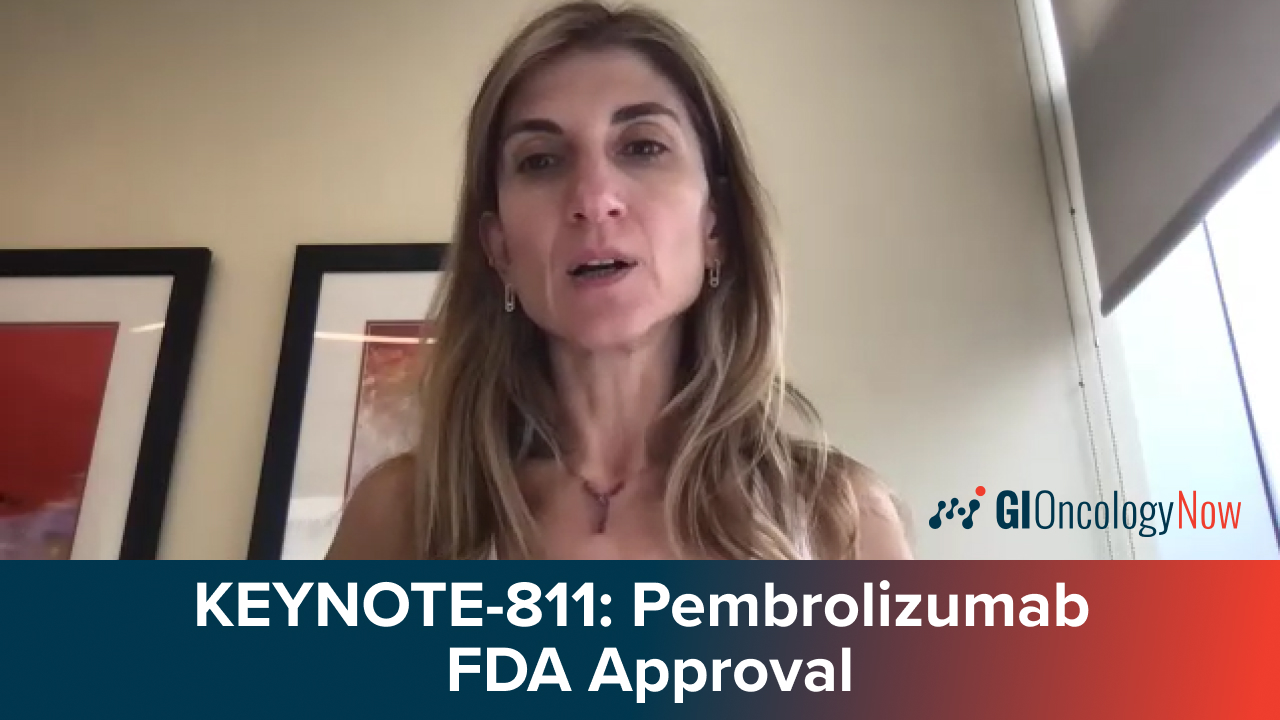Sacituzumab Tirumotecan for Gastric Cancer With TROP2 expression: The KL264-01 Trial
By Jordi Rodón Ahnert, MD, PhD - Last Updated: March 19, 2025Jordi Rodón Ahnert, MD, PhD, of MD Anderson Cancer Center, discusses the use of sacituzumab tirumotecan for gastric and gastroesophageal cancers, and how the treatment was analyzed in the phase 1/2 KL264-01 trial.
He compares the differences of sacituzumab tirumotecan administration in the second- versus third-line setting for patients, as well as how the treatment compares to sacituzumab govitecan.
What was the design and final outcomes of the KL264-01 trial?
Dr. Rodón Ahnert: The trial involved a cohort of gastric cancer patients that we treated in the context of a larger phase 1 clinical trial.
We initially enrolled patients with advanced disease, but there was an amendment and we also enrolled patients in the second line. Our primary outcome was the safety of the agent, which is similar to what has been described before. The main side effects were bone marrow side effects such as anemia or leukopenia. We didn’t see pneumonitis or neuropathy that has been described with other antivirus conjugates with different payloads.
The secondary outcome was efficacy. We saw a response rate of around 22% – dependent on the prior lines of therapy or the expression of TROP 2 – which is the target of this antibody conjugate. The response rate changes a little bit depending on the patient population.
The efficacy of this treatment opens the possibility of comparing it to standard of care treatment in second- or third-line therapy.
What are the main differences of sacituzumab tirumotecan administration in the second versus third line setting?
Dr. Rodón Ahnert: Each time you treat a heavily pretreated patient population, responses tend to go down. It’s important to note that at least one third of the patients involved in our trial had already received TOP1 inhibitors.
Our payload is a TOP1 inhibitor, along with tirumotecan; it’s a standard of care option for patients with gastric cancers, but some patients may receive FOLFIRINOX in the first line.
When you retreat patients using drugs with a similar mechanism of action, resistance builds up. Patients that are heavily pretreated normally respond less to chemotherapy in general, and this can be cytotoxic, as well.
Patients who received second-line therapy had a higher response rate than those who received treatment in the third-line setting, but the rate is still comparable to the other treatment options that these patients may have. I think it’s sufficient to keep exploring tirumotecan in both second- and third-line settings.
How does care for patients with high TROP2 expression differ than those with lower TROP2 expression?
Dr. Rodón Ahnert: We’ve noticed a trend in which patients with high expression tend to respond more than those with low expression.
When targeting TROP2 and antiviral conjugates, it can be hard to define a line between high and low responders and non-responders, which can lead to difficulties when considering which patients to treat.
A higher expression leads to more predictive results and better response; but we also see responses in TROP2-low patients, leading to uncertainty in whether these patients need to be excluded or not – especially in the second- or third-line setting where patients with gastric cancer have very limited treatment options.
Could sacituzumab tirumotecan potentially be used in the first-line setting?
Dr. Rodón Ahnert:
I think it’s still too early to say – I think it will first be tested in bigger patient populations with more patients in second- and third-line settings.
Bear in mind that in second-line settings, standard of care options such as ramucirumab/paclitaxel has a response rate of 25%. So although we have a small number of patients, it seems promising that in the future we will see that being tested in the first-line setting.
We also know that antibody drug conjugates work well when combined with immune therapy, and there are currently several approvals for some of these combination treatments. I wouldn’t be surprised if that’s also one way of exploring this treatment in the second- or first-line setting.
What are the differences in efficacy between sacituzumab tirumotecan and sacituzumab govitecan?
Dr. Rodón Ahnert: The main one is that the antibody is very similar in both treatments, while the linker and payload are different. These are small differences that can change the pharmacology of the drug. The half-life is longer, so you can give the medication every 2 weeks instead of on day 1 and day 8 of each cycle.
It’s convenient for patients, but the difference in the payload is that even if they have the same mechanism of action, this can change disease response. For example, when using govitecan, the response rate in gastric cancer is very low. But with tirumotecan, we see good efficacy for this disease.
So changes in the cytotoxic component of the antibiotic conjugate can change which types of tumor the drug is more efficacious against.
What is the next step for this trial?
Dr. Rodón Ahnert: The next step will be to explore this treatment more in the third-line setting, as there is no approved agent for this setting and we’ve already seen significant response rates with tirumotecan. We’re about to begin a clinical trial in the third-line setting, and then further trials in the second-line setting are being discussed. A second-line trial will most likely compare tirumotecan to the standard of care option.
I think it will first be explored in third line with a bigger cohort, and then maybe we will see this moving to combinations or randomized trials in second line.







 © 2025 Mashup Media, LLC, a Formedics Property. All Rights Reserved.
© 2025 Mashup Media, LLC, a Formedics Property. All Rights Reserved.